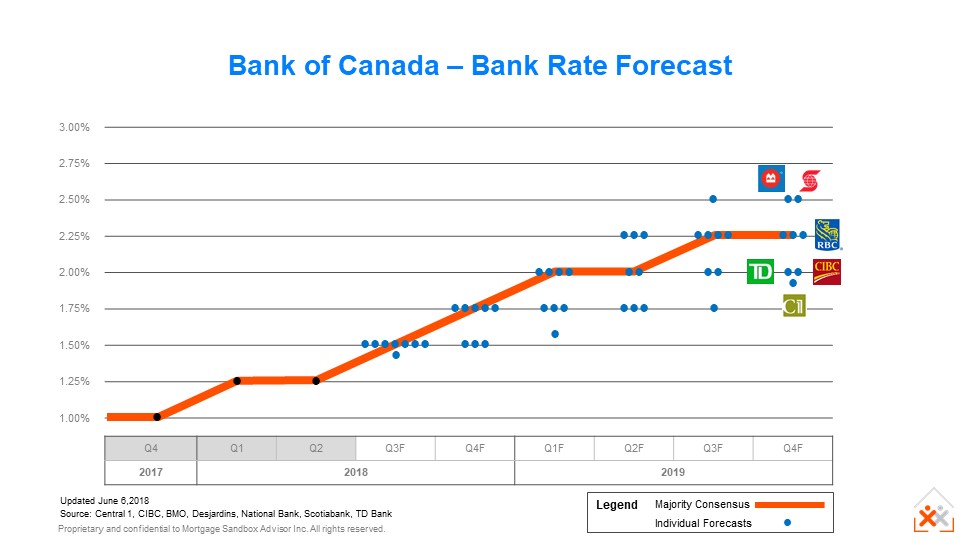How To Respond To Flash Flood Warnings And Alerts

Table of Contents
Understanding Flash Flood Warnings and Alerts
What's the difference?
The terms "flash flood warning" and "flash flood alert" are often used interchangeably, but there's a crucial distinction. A flash flood warning indicates that a flash flood is imminent or already occurring in your area. This is a serious situation requiring immediate action. A flash flood alert, on the other hand, means that conditions are favorable for flash flooding to develop. While not as immediate a threat as a warning, an alert still calls for preparedness and monitoring of the situation.
- Warnings: Indicate imminent danger; take immediate action. Evacuation may be necessary.
- Alerts: Suggest a potential threat; prepare for possible flooding. Monitor weather reports closely.
- Official Sources: Pay close attention to official sources like the National Weather Service (NWS) in the United States, or your country's equivalent meteorological agency. These agencies provide accurate and timely information.
- Local Risk: Understand your local geographical risks and your vulnerability to flash flooding. Areas with steep slopes, poor drainage, or near rivers and streams are particularly susceptible.
Immediate Actions Upon Receiving a Flash Flood Warning
Evacuate Immediately
If you receive a flash flood warning, your top priority is to evacuate immediately. Do not hesitate; rising floodwaters can move incredibly fast and become life-threatening in minutes.
- Move to Higher Ground: Head to higher ground as quickly and safely as possible. This is your best protection from the rapidly rising water.
- Do Not Drive Through Flooded Areas: Even if the water appears shallow, it can be deceptively deep and powerful, capable of sweeping your vehicle away. "Turn around, don't drown" is a vital piece of advice.
- Follow Evacuation Orders: Obey all evacuation orders issued by local authorities without delay. They are prioritizing your safety.
- Assist Neighbors (If Safe): If you can safely do so, help vulnerable neighbors, particularly the elderly or those with disabilities, to evacuate.
Safety Precautions During a Flash Flood
Protecting Yourself and Your Property
Once a flash flood warning is issued, taking immediate steps to protect yourself and your property is vital. While evacuation is priority one, these steps can significantly reduce the damage and risk.
- Move Valuables: Move valuable items, important documents, and irreplaceable possessions to higher floors or areas less prone to flooding.
- Unplug Appliances: Unplug all electrical appliances to prevent electrical shocks and damage from floodwaters.
- Turn Off Utilities: Turn off gas, electricity, and water if instructed by authorities or if you believe your home is at risk of significant flooding.
- Stay Informed: Continue to monitor the situation through official channels, such as radio, television, or your local emergency management website.
- Avoid Contact with Floodwaters: Floodwaters are often contaminated with sewage, chemicals, and debris. Avoid all contact to prevent illness and injury.
Post-Flash Flood Actions
Assessing Damage and Seeking Help
After the immediate danger has passed, the process of recovery and assessment begins. Safety remains a priority.
- Check for Injuries: Check yourself and your family for injuries and seek medical attention if needed.
- Report Damage: Report any damage to your property to your insurance company and local authorities. This is crucial for receiving assistance and aid.
- Avoid Damaged Buildings: Avoid entering flood-damaged buildings until they have been inspected and deemed safe by qualified professionals. Structural damage may be hidden.
- Beware of Hazards: Be aware of potential hazards such as downed power lines, debris, and weakened structures.
- Follow Official Guidance: Follow official guidance regarding cleaning and sanitation procedures to prevent the spread of disease and contamination.
Conclusion
Responding promptly and effectively to flash flood warnings and alerts is critical for saving lives and minimizing property damage. Preparedness, swift action, and a clear understanding of the risks involved are your best defenses against the devastating effects of flash floods. Heeding flash flood warnings and alerts is not just about protecting your possessions—it's about protecting your life. Develop a comprehensive flash flood preparedness plan, including evacuation routes and emergency supplies, to ensure you and your family are ready. Knowing how to respond to flash flood warnings can save lives!

Featured Posts
-
 Bundesliga Aufstieg Der Hsv Ist Zurueck
May 26, 2025
Bundesliga Aufstieg Der Hsv Ist Zurueck
May 26, 2025 -
 Gaza Hostages Former Israeli Women Soldiers Urgent Appeal
May 26, 2025
Gaza Hostages Former Israeli Women Soldiers Urgent Appeal
May 26, 2025 -
 A Royal Scandal Uncovering Corruption In Monacos Elite
May 26, 2025
A Royal Scandal Uncovering Corruption In Monacos Elite
May 26, 2025 -
 Increased Retail Sales Impact On Bank Of Canada Interest Rates
May 26, 2025
Increased Retail Sales Impact On Bank Of Canada Interest Rates
May 26, 2025 -
 Londonskiy Zakhid Naomi Kempbell Vrazila U Biliy Tunitsi
May 26, 2025
Londonskiy Zakhid Naomi Kempbell Vrazila U Biliy Tunitsi
May 26, 2025
Latest Posts
-
 Nba Lifts Ban John Haliburtons Return To Pacers Home Games
May 28, 2025
Nba Lifts Ban John Haliburtons Return To Pacers Home Games
May 28, 2025 -
 John Haliburton Why His Return To Pacers Games Matters
May 28, 2025
John Haliburton Why His Return To Pacers Games Matters
May 28, 2025 -
 John Haliburtons Dad Returns To Pacers Games After Nba Ban Lifted
May 28, 2025
John Haliburtons Dad Returns To Pacers Games After Nba Ban Lifted
May 28, 2025 -
 Nba Playoffs Tyrese Haliburton Player Props And Game 2 Betting Guide Pacers Vs Knicks
May 28, 2025
Nba Playoffs Tyrese Haliburton Player Props And Game 2 Betting Guide Pacers Vs Knicks
May 28, 2025 -
 Tyrese Haliburton Performance Predictions Pacers Vs Knicks Game 2 Betting Analysis
May 28, 2025
Tyrese Haliburton Performance Predictions Pacers Vs Knicks Game 2 Betting Analysis
May 28, 2025
